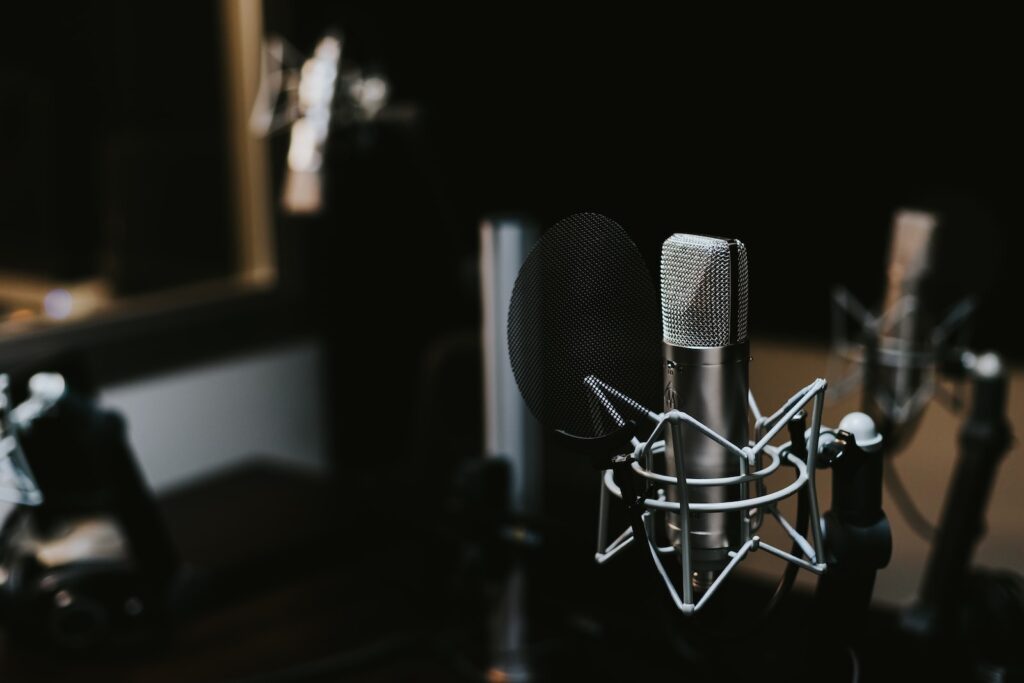
Microphone polar patterns refer to the way a microphone captures sound and the direction it is most sensitive to. Understanding different polar patterns is important for selecting the right microphone for a specific recording application. Here are the different microphone polar patterns:
1. Omnidirectional
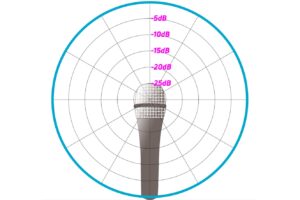
Omnidirectional microphones capture sound equally from all directions. They are best for capturing ambient sound or recordings in which sound is coming from all directions, such as a room recording or a live concert. They are also good for capturing a wide area in a single take, for example, for podcasting.
Omnidirectional microphones are best in situations such as :
- Ambient sound recordings: For recording natural soundscapes or capturing the overall sound of a location, omnidirectional microphones are an excellent choice.
- Live concerts or events: Omnidirectional microphones are great for capturing the energy and excitement of a live performance, especially if the sound is coming from all directions.
- Conference or lecture recordings: When recording a speaker or panel discussion in a room, an omnidirectional microphone can capture all the sound in the room, including audience reactions and any background noise.
- Group interviews: For recording group interviews or roundtable discussions, an omnidirectional microphone can be placed in the center of the table to capture everyone’s voices.
- Podcasting: For podcasting or creating content where you want to capture the ambiance of a room or the atmosphere of an event, an omnidirectional microphone can be a useful tool.
2. Cardioid
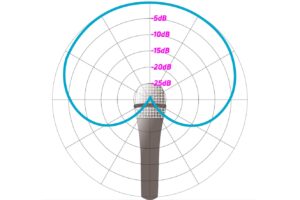
Cardioid microphones are directional and are most sensitive to sound coming from the front of the microphone. They reject sound coming from the sides and rear, making them a good choice for isolating a specific sound source, such as a person speaking, in a noisy environment.
Cardioid microphones are best in situations such as :
- Vocal recording: For recording vocals, such as singing or spoken word, a cardioid microphone is a great choice. The directional pickup pattern helps to isolate the voice and reduce background noise.
- Voice-over recording: For recording voice-overs, such as for a commercial or a video, a cardioid microphone is ideal. The directional pickup pattern helps to reduce background noise and provide a clear and focused sound.
- Instrument recording: For recording a single instrument, such as a guitar or a piano, a cardioid microphone is an excellent choice. The directional pickup pattern helps to isolate the instrument and reduce background noise.
- Broadcasting: For live broadcasting, such as for a radio or TV show, cardioid microphones are often used. The directional pickup pattern helps to reduce background noise and provide clear audio for the audience.
- Podcasting: For podcasting or creating content where you want to focus on a single speaker, a cardioid microphone can be a useful tool. The directional pickup pattern helps to reduce background noise and provide a clear and focused sound.
3. Hypercardioid
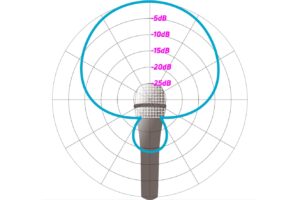
Hypercardioid microphones are even more directional than cardioid microphones and have a narrower pick-up pattern. They reject sound coming from the sides even more effectively than cardioid microphones, making them useful for isolating a specific sound source in a very noisy environment.
Hypercardioid microphones are best in situations such as
- :Live sound reinforcement: For live sound reinforcement, such as for a concert or a theater performance, a hypercardioid microphone can be used to capture sound from a specific performer while rejecting sound from other directions.
- Broadcasting: For live broadcasting, such as for a radio or TV show, hypercardioid microphones can be used to provide clear audio for the audience while reducing background noise.
- Film and video production: For film and video production, hypercardioid microphones can be used to capture dialogue or sound effects from a specific direction while rejecting background noise.
- Isolating a specific sound source: For recording in noisy environments, such as a busy street or a construction site, a hypercardioid microphone can be used to isolate a specific sound source and reduce background noise.
- Interviews: For recording interviews, especially in noisy environments, a hypercardioid microphone can be used to focus on the speaker’s voice and reduce background noise.
4. Figure-8 (Bidirectional)
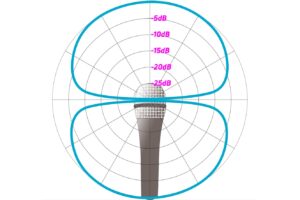
Figure-8 microphones are bi-directional and capture sound equally from both the front and the back of the microphone. They reject sound coming from the sides. They are useful for recording two people facing each other or for recording a performer and an audience. They are often used for podcasting or for recording an interview.
Figure-8 microphones are best in situations such as :
- Stereo recording: For stereo recording, such as for a live concert or an acoustic performance, figure-8 microphones can be used in a stereo configuration to capture sound from two opposing directions.
- Dual-source recording: For recording two sources, such as two speakers in a conversation, figure-8 microphones can be placed in a back-to-back configuration to capture sound from each source.
- Ambient sound recordings: For recording ambient soundscapes, such as natural sounds in a forest or the sounds of a busy street, figure-8 microphones can be used to capture sound from two opposing directions.
- Room tone recordings: For recording room tone or background noise, figure-8 microphones can be used to capture sound from two opposing directions and create a stereo image of the space.
- Broadcasting: For live broadcasting, such as for a radio or TV show, figure-8 microphones can be used to capture sound from two opposing sources, such as a panel discussion or a live performance.
5. Shotgun
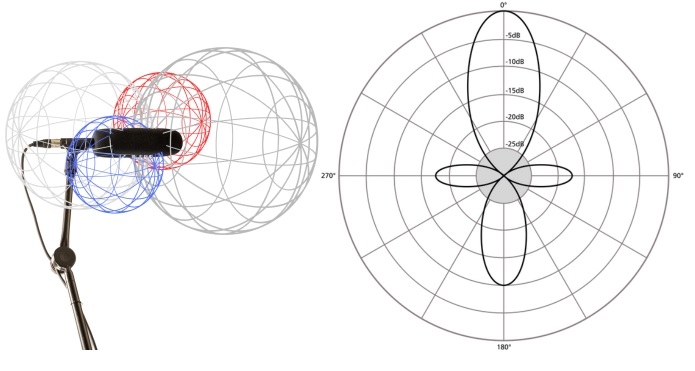
Shotgun microphones are highly directional and are often used in film and video production to capture sound from a specific direction, such as from an actor. They have a long, cylindrical shape that helps to reject sounds coming from the sides and rear of the microphone.
Shotgun microphones are best in situations such as :
- Film and video production: For film and video production, shotgun microphones can be used to capture dialogue or sound effects while rejecting background noise. The directional pickup pattern helps to reduce unwanted noise and provide clear audio for the final production.
- Live sound reinforcement: For live sound reinforcement, such as for a theater performance or a sporting event, shotgun microphones can be used to capture sound from a specific direction and reject sound from other directions.
- Wildlife and nature recording: For recording wildlife or natural sounds, shotgun microphones can be used to capture sounds from a specific direction while reducing background noise from other directions.
- Interviews: For recording interviews, especially in noisy environments, shotgun microphones can be used to focus on the speaker’s voice and reduce background noise.
News gathering: For news gathering, such as for a live news report, shotgun microphones can be used to capture sound from a specific source while rejecting noise from other directions.
In conclusion, different microphone polar patterns allow for capturing sound in different ways, making it important to choose the right microphone for a specific recording application. Whether you need to capture ambient sound, isolate a specific sound source, or record an interview, understanding the different polar patterns can help you select the right microphone for the job.

